Physical Address
304 North Cardinal St.
Dorchester Center, MA 02124
Physical Address
304 North Cardinal St.
Dorchester Center, MA 02124
Otagi Nenbutsuji Temple, a hidden temple in Kyoto’s Arashiyama district, is home to 1,200 unique stone statues, each with its own story.
Quiet, mysterious, and deeply spiritual, this temple invites visitors to reflect on life, death, and the passage of time.
Long before Kyoto became the elegant city we know today, Adashino was once one of the city’s ancient burial grounds.
In fact, there were three major “wind burial” sites (fūsō 風葬) in Kyoto, Toribeno near Kiyomizu-dera, Rendaino to the north, and Adashino in Arashiyama, where the deceased were laid to rest in the open, allowing nature to return them to the earth.
Today, Otagi Nenbutsuji Temple stands on this sacred land, honoring those forgotten souls with rows of stone statues representing the spirits of the departed.
The temple sits in Saga-Toriimoto, a quiet, traditional district of Arashiyama.
It’s a little off the beaten path, which means far fewer tourists and a peaceful atmosphere.
You can reach it by bus, but we decided to walk from Arashiyama Station, which took a little over an hour.
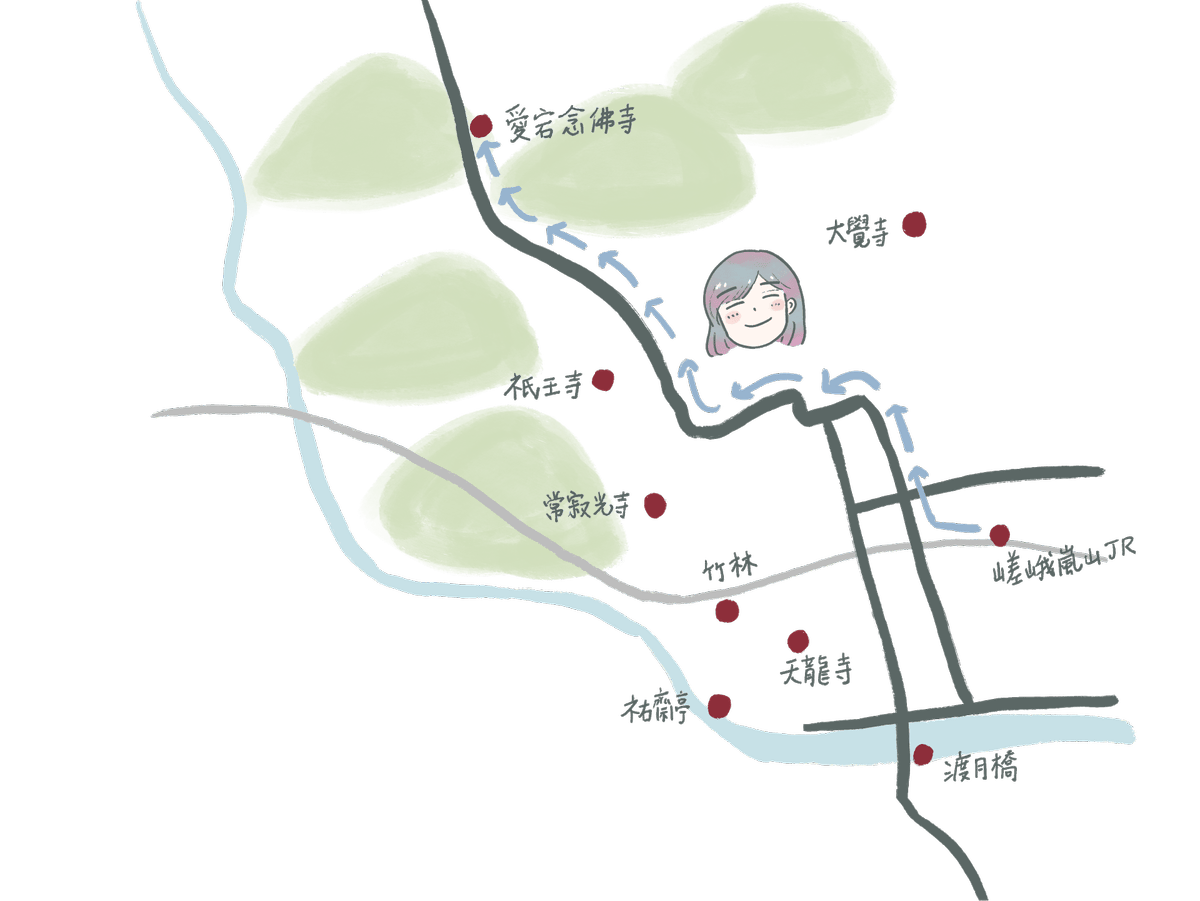
It was a long walk, but full of charming sights — old Japanese houses, thatched-roof homes, and even some cute tanuki (raccoon dog) statues along the way.

There was also a quirky little signboard we couldn’t quite figure out, but it seemed very flexible doing a backbend! 😆
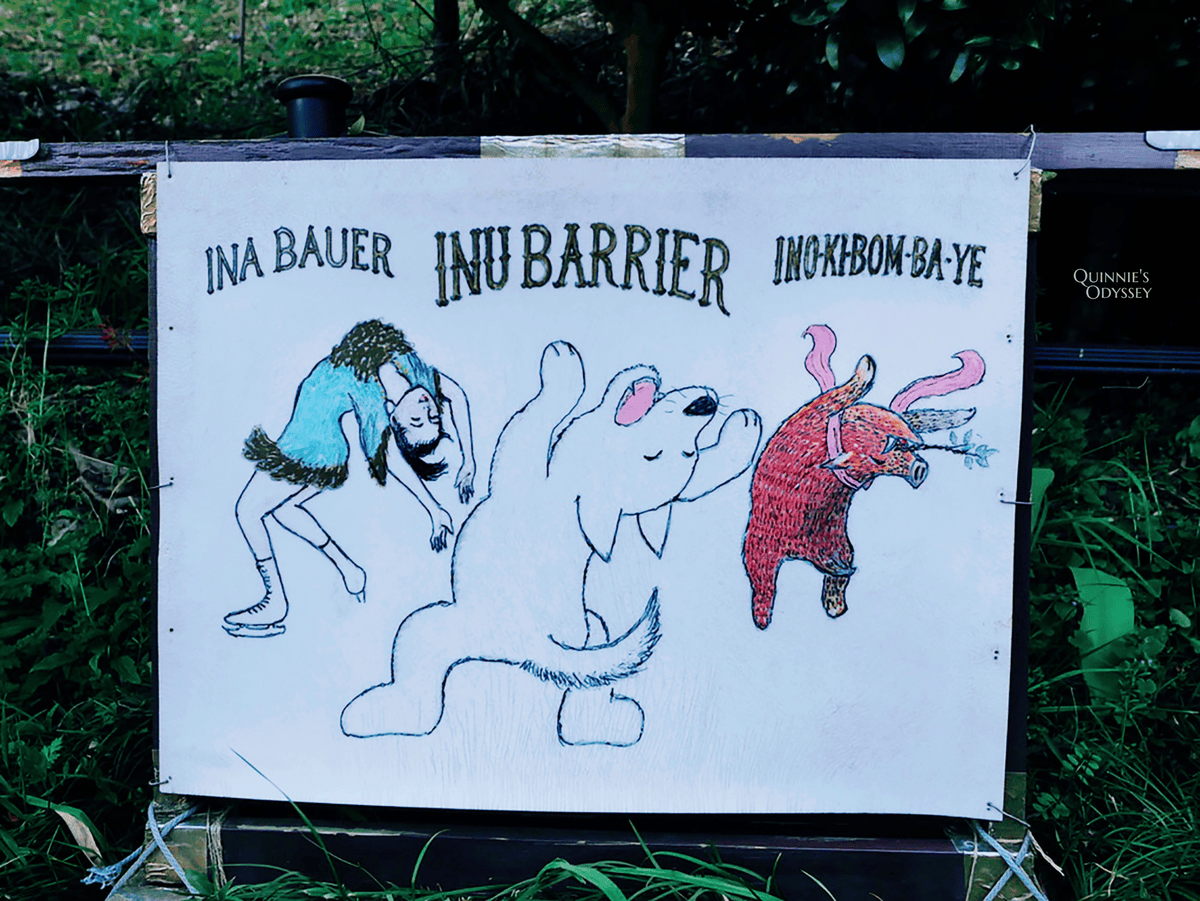

Adashino Nenbutsu-ji is famous for its 1,200 Rakan statues, earning it the nickname “The Temple of 1,200 Arhats.”
Most of these statues were donated by worshippers to honor and comfort the countless wandering souls once buried in this ancient graveyard.
As you walk up the gentle slope from the entrance, you’ll see rows of moss-covered stone figures standing quietly on the grassy hillside, each with its own unique pose and expression, as if welcoming you into their serene world.
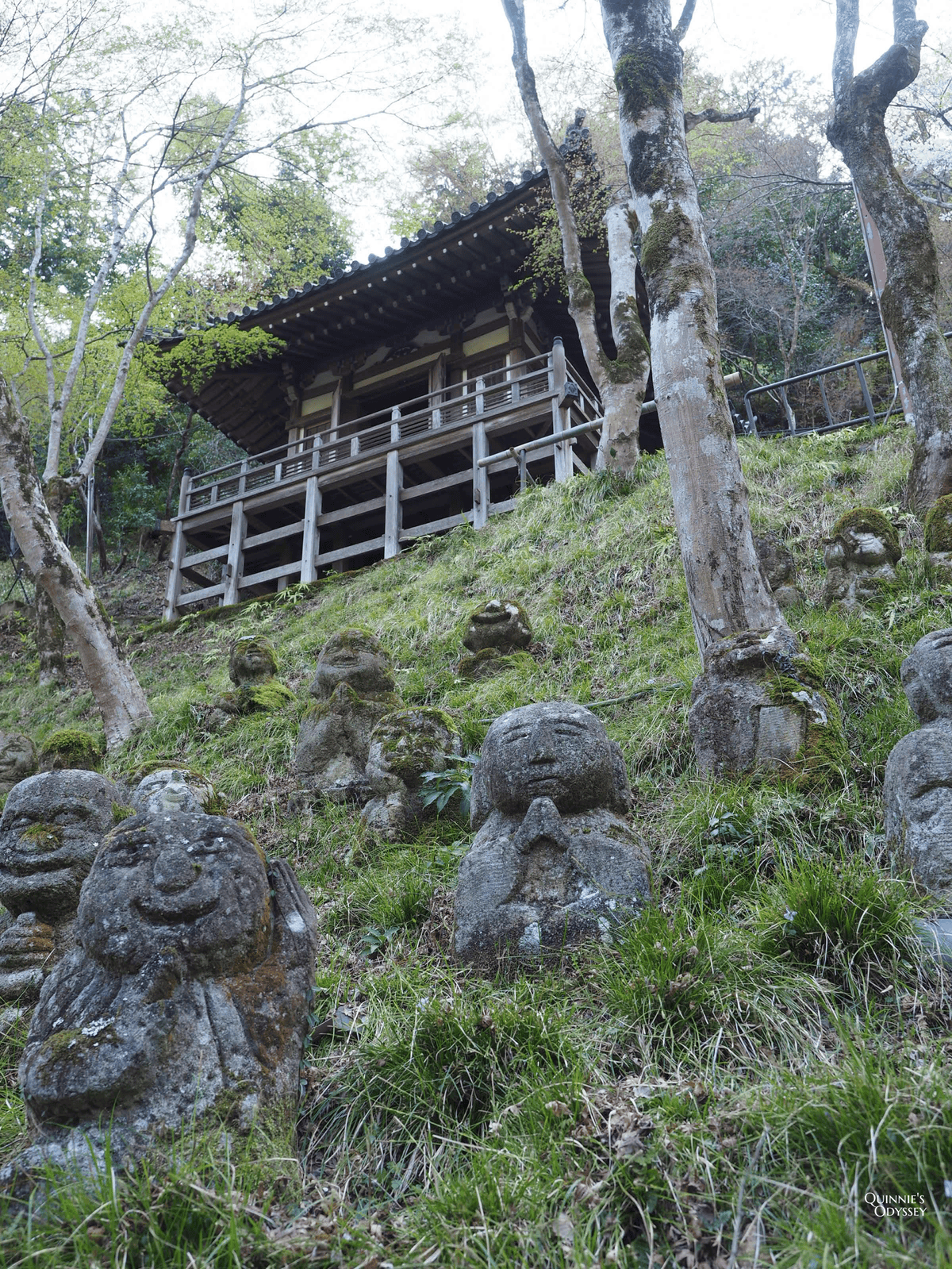
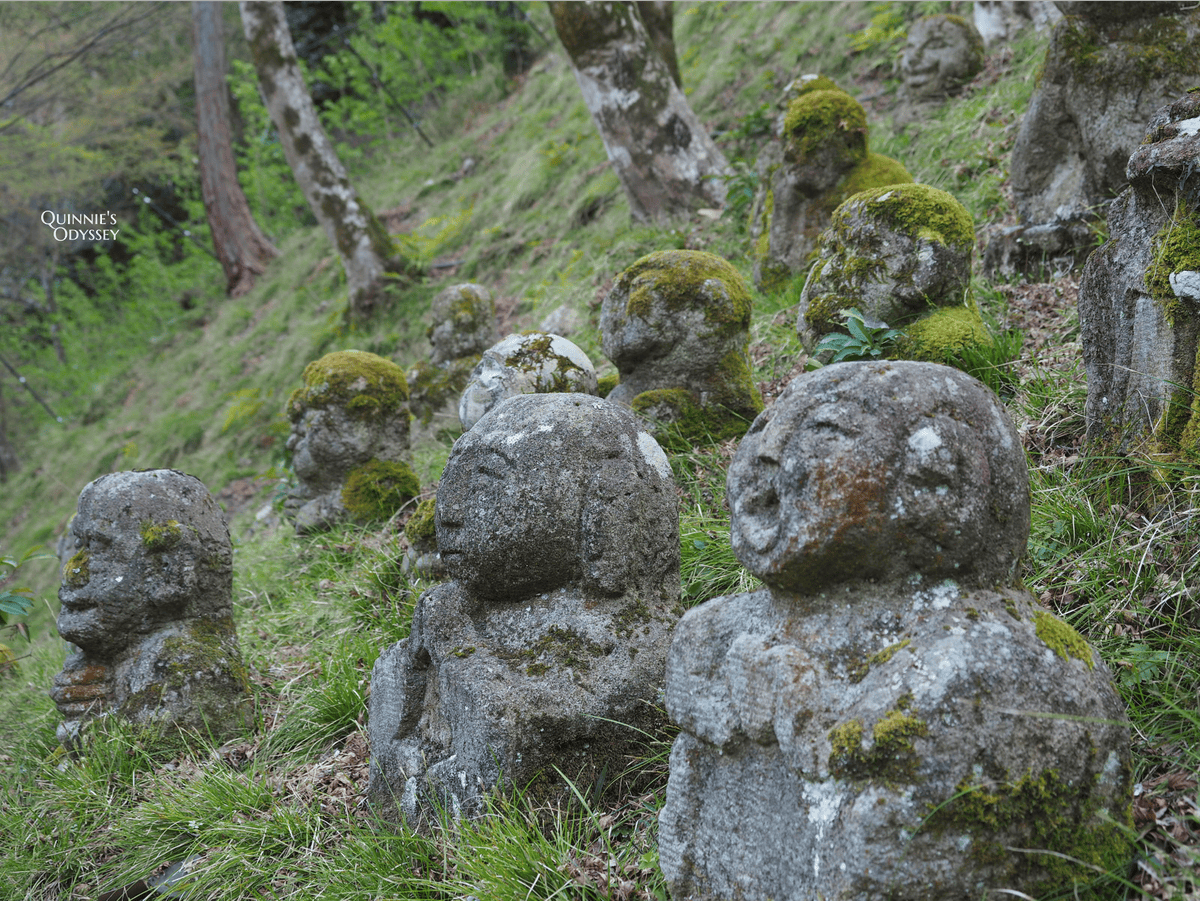
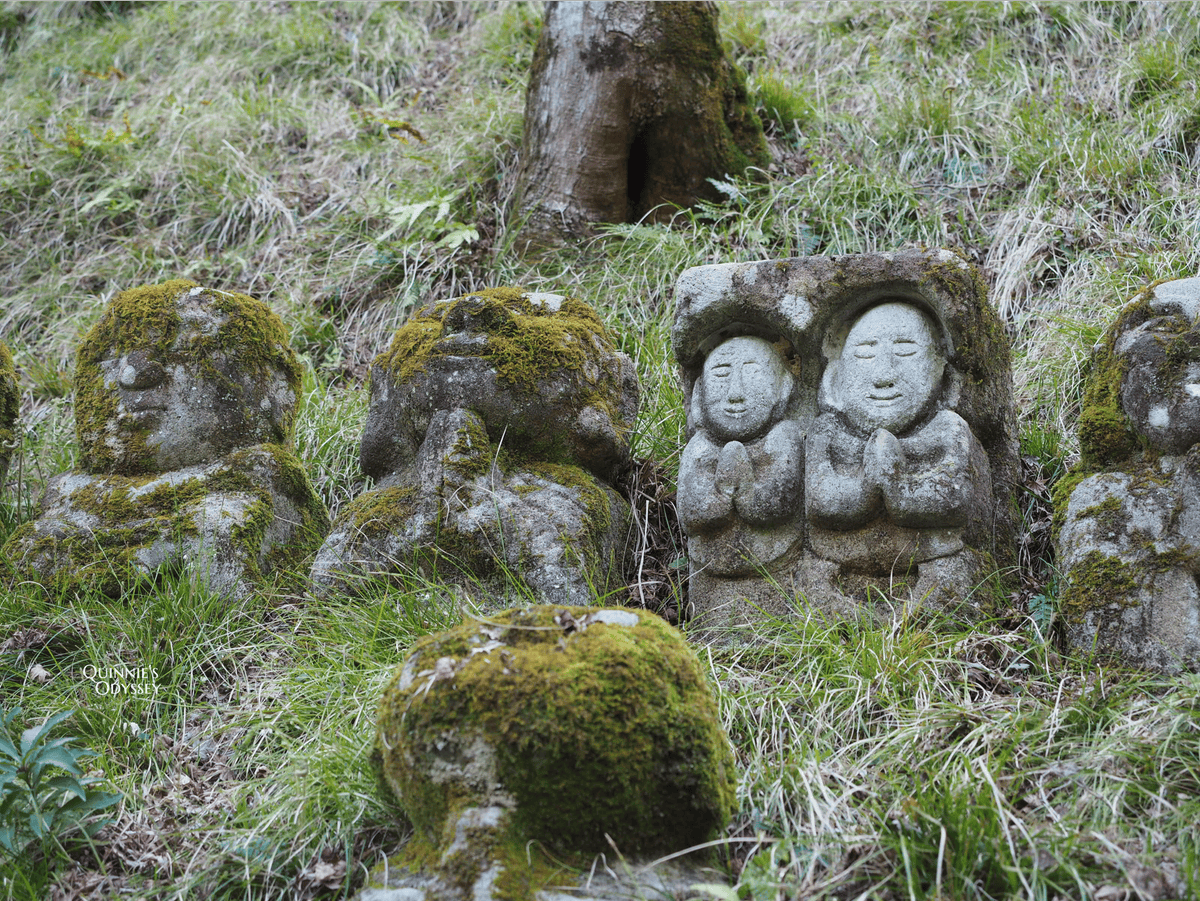

Otagi Nenbutsuji Temple has a long and dramatic history.
It was originally built in 770 CE in Kyoto’s Higashiyama area, but after being swept away by the Kamo River floods, it was later rebuilt in the city’s northeast.
Over the centuries, the temple fell into decay, leaving only a few buildings standing.
In 1922, the temple was dismantled and relocated to its current site in Arashiyama’s Saga-Toriimoto area to preserve what remained.
But misfortune struck again — a massive typhoon in 1950 severely damaged the temple, and it was temporarily abandoned.
Everything changed in 1955, when Reverend Kōchō Nishimura became the new abbot.
He was not only a monk but also a master sculptor.
He began a restoration project that invited donors to carve their own stone Arhats , each statue representing their prayers, memories, or even themselves.
Some people carved their own likeness, hoping their spirit would live on through stone.
Others carved statues in memory of loved ones.
Each Arhats was blessed through a ritual, believed to have received a soul from its creator’s hands.
That’s why every statue here is one-of-a-kind — full of emotion, imagination, and humanity.
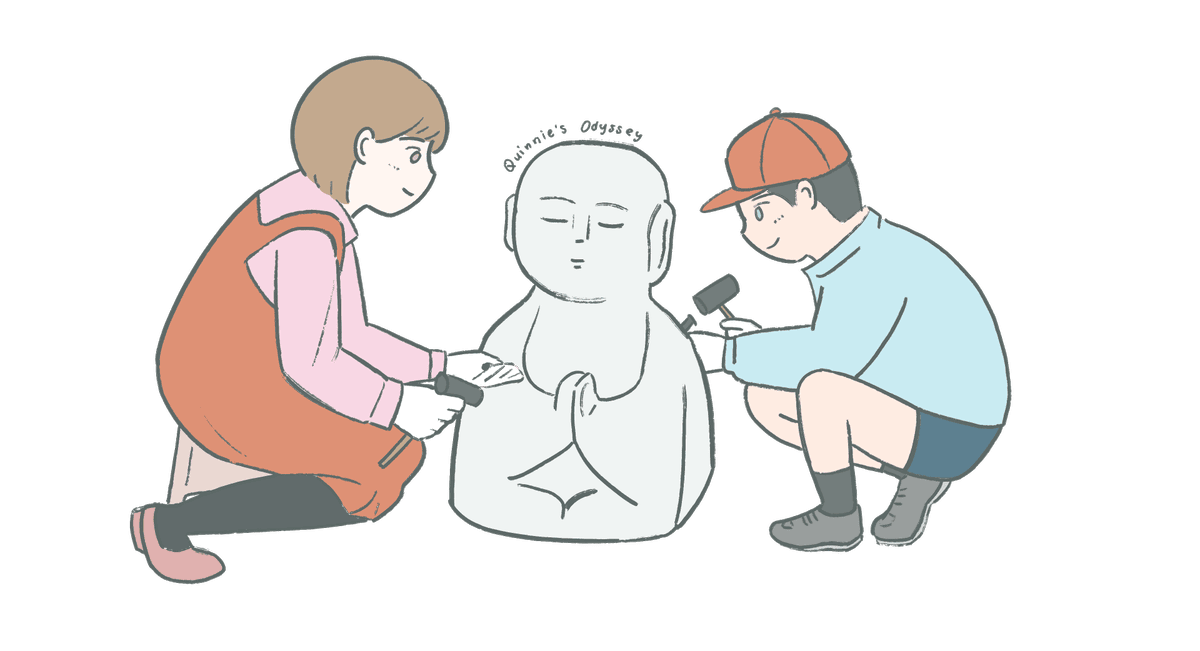
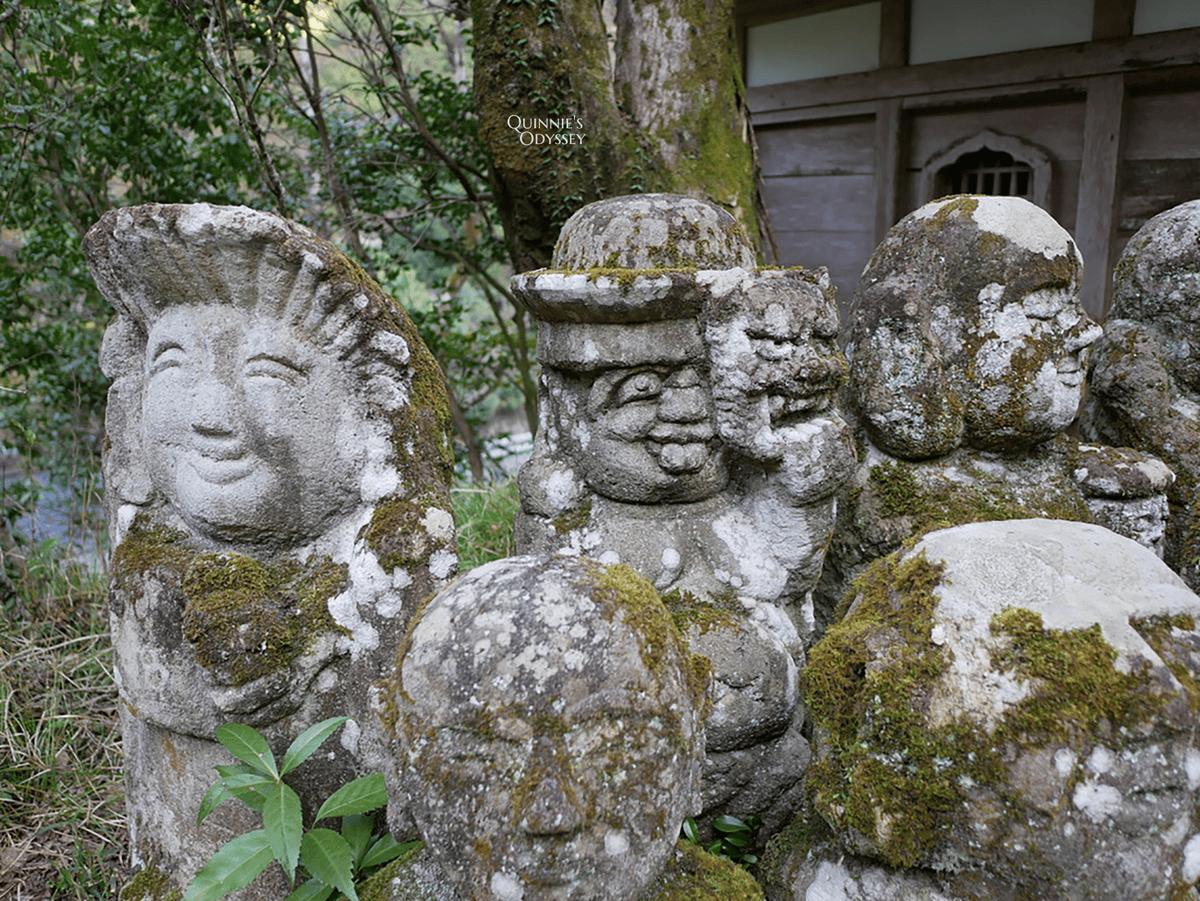

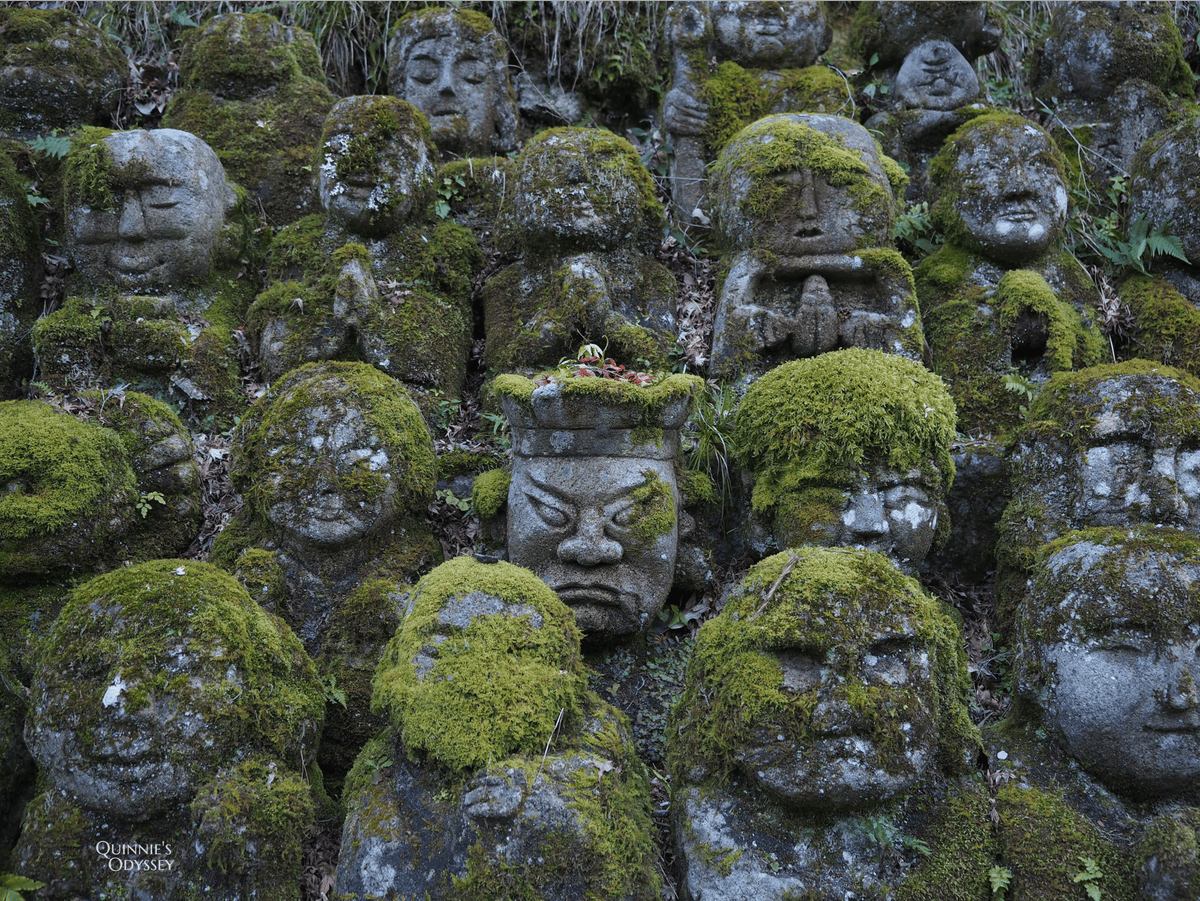
Today, the temple grounds are filled with moss-covered stone figures in every imaginable pose — laughing, meditating, grimacing, or even sticking out their tongues.
They look weathered yet alive, each telling its own story.

As you walk up the slope and turn around, you’ll spot one of the temple’s most famous figures, the “Laughing Skyward Rakan”, gazing upward in joy.👇
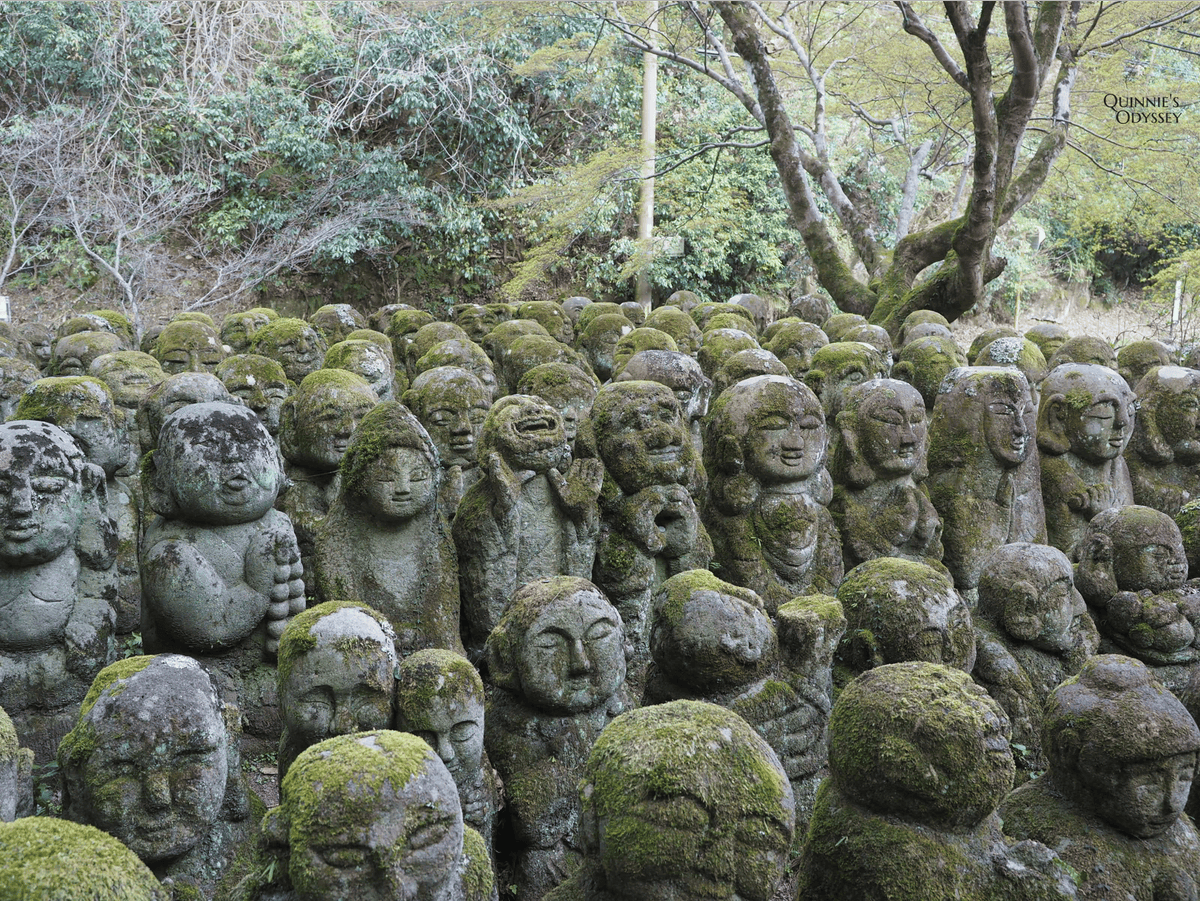
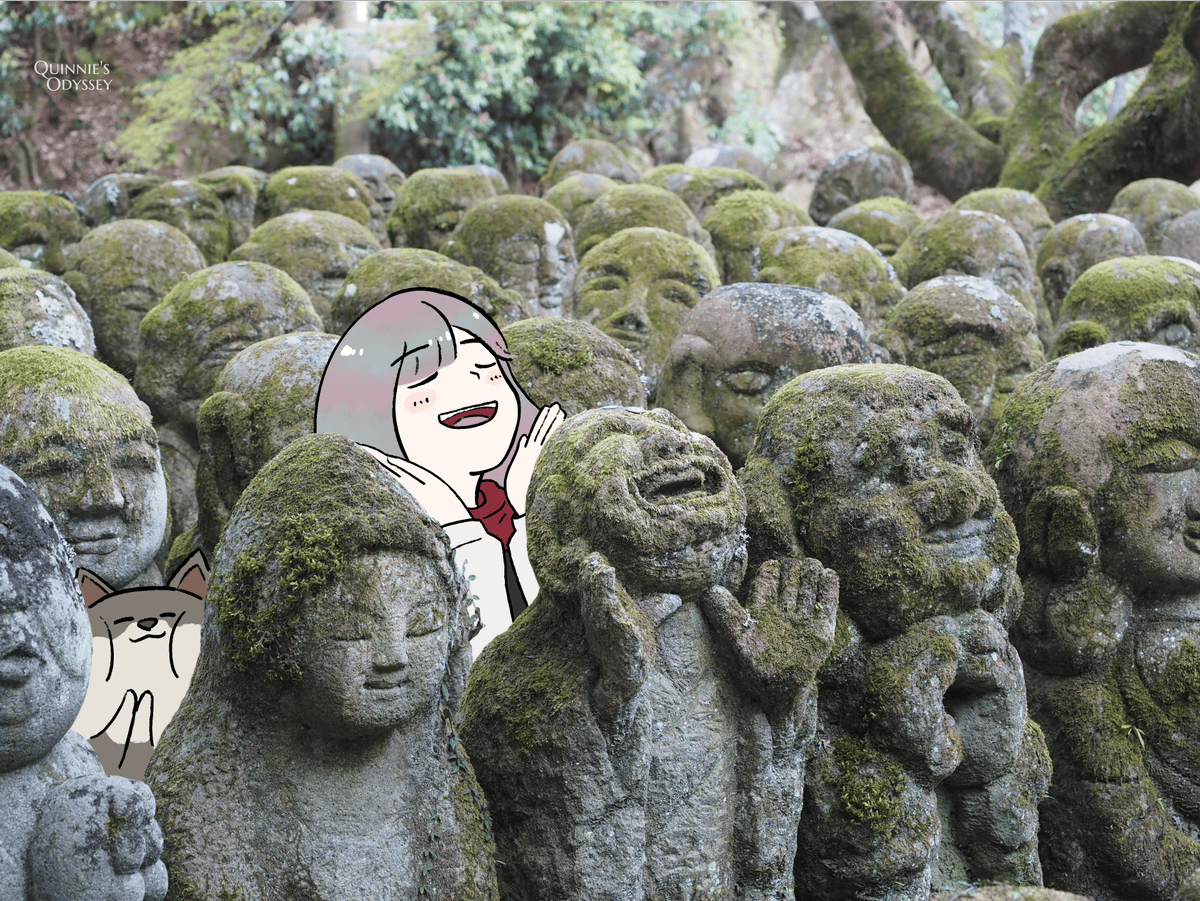
It’s said that visitors often play a little game — find the Rakan that looks most like you.
Can you find your twin among them? 🤗
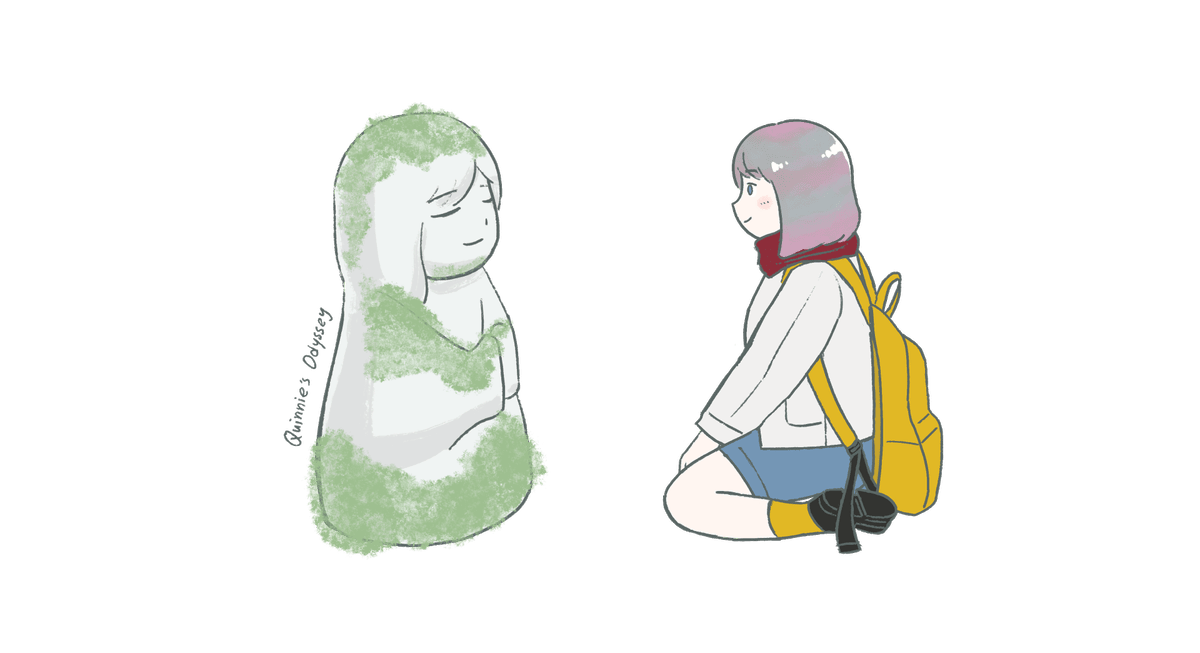
After spending some time among the statues, take a slow stroll around the temple grounds.👇
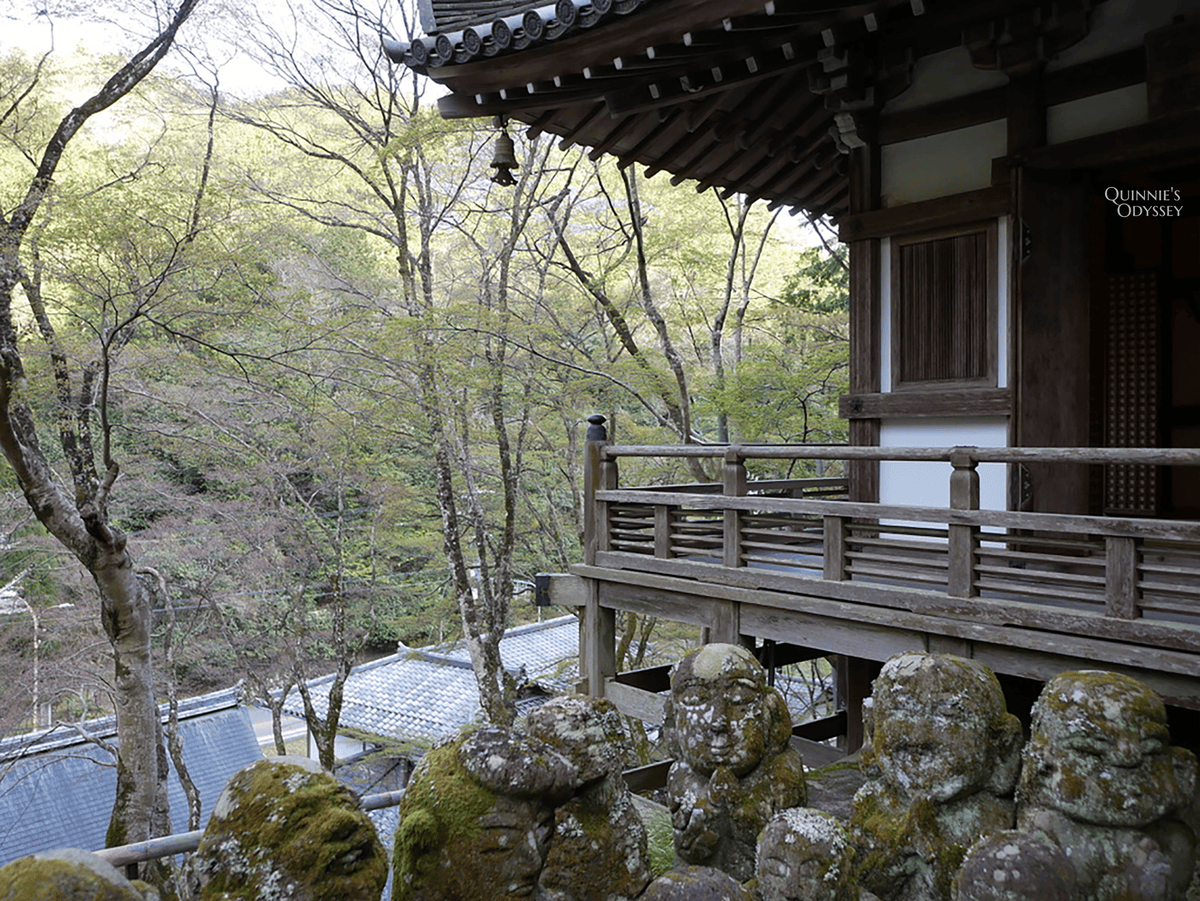
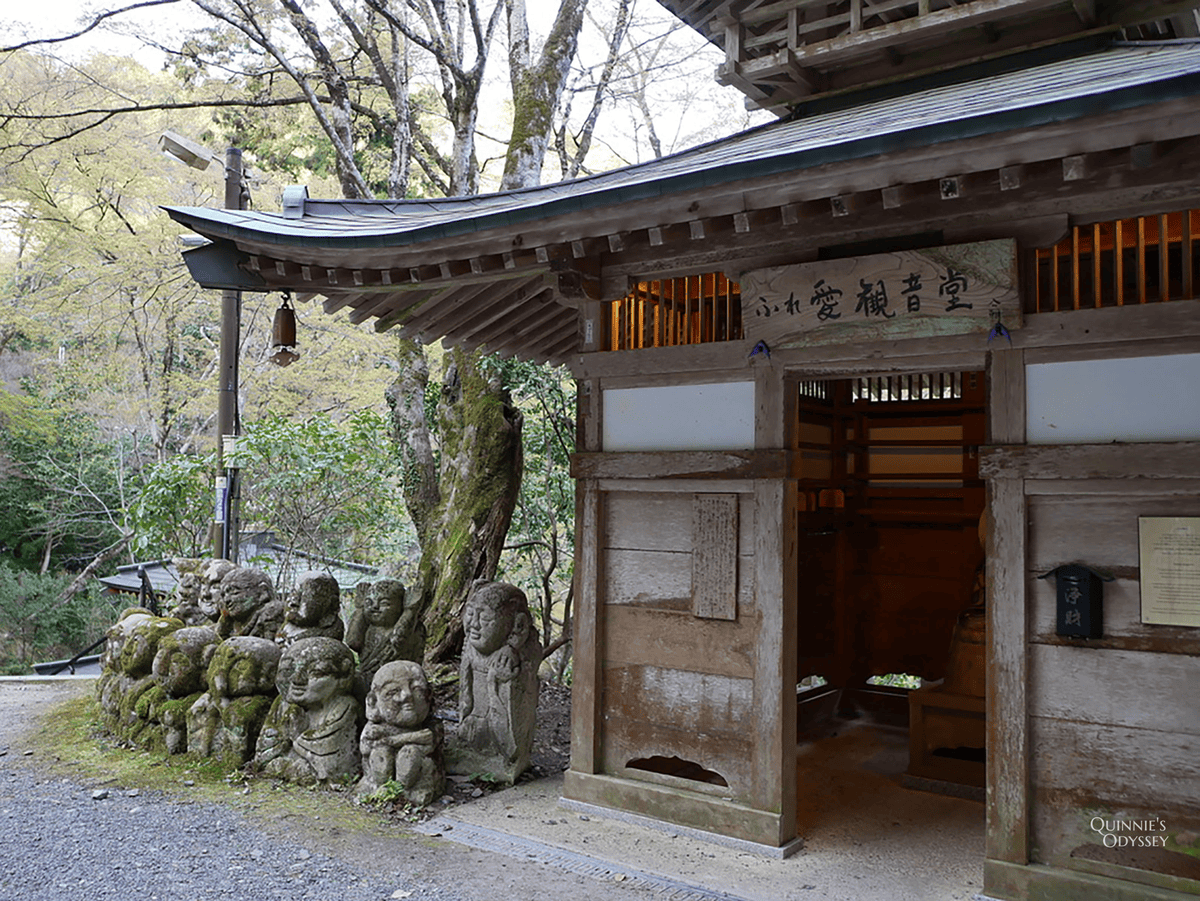
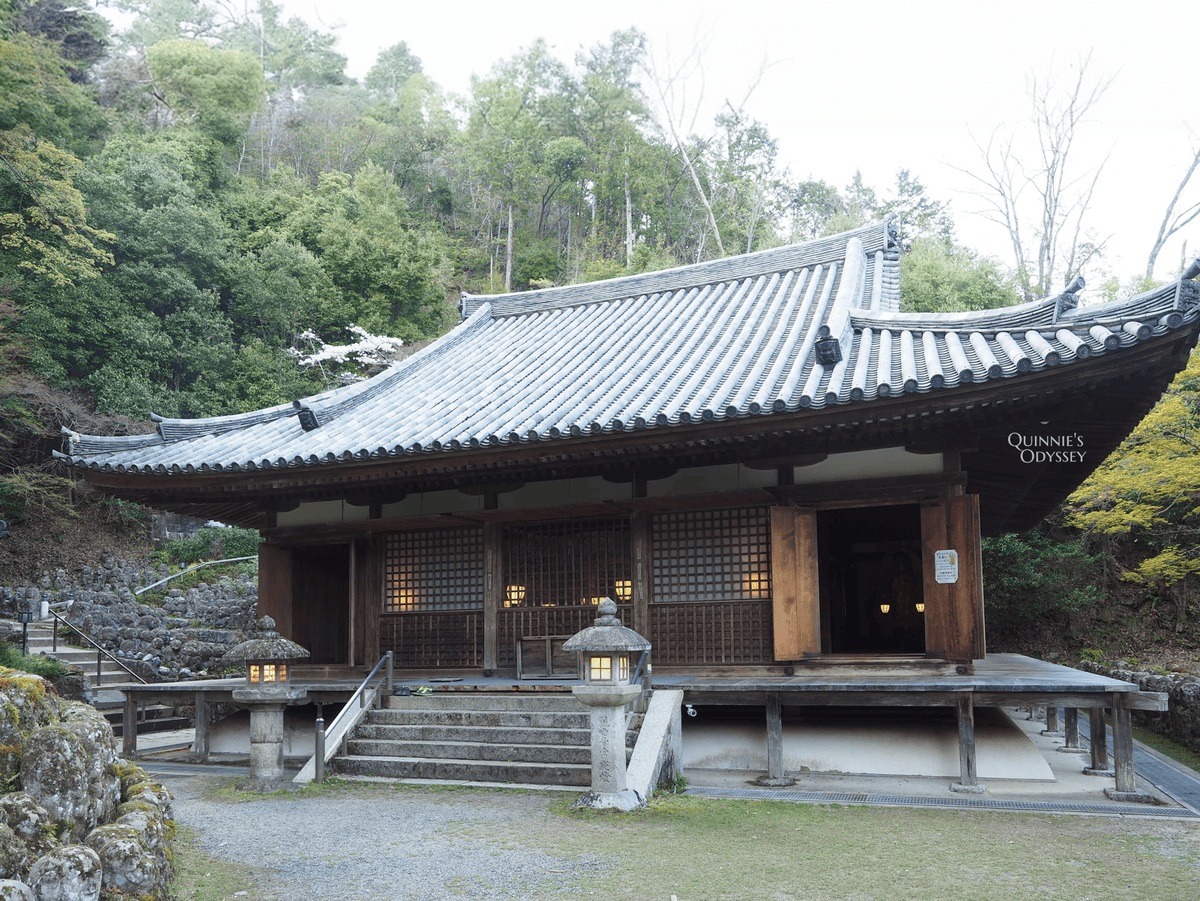
There’s a peaceful, almost otherworldly feeling, as if you’re surrounded by thousands of silent stories.
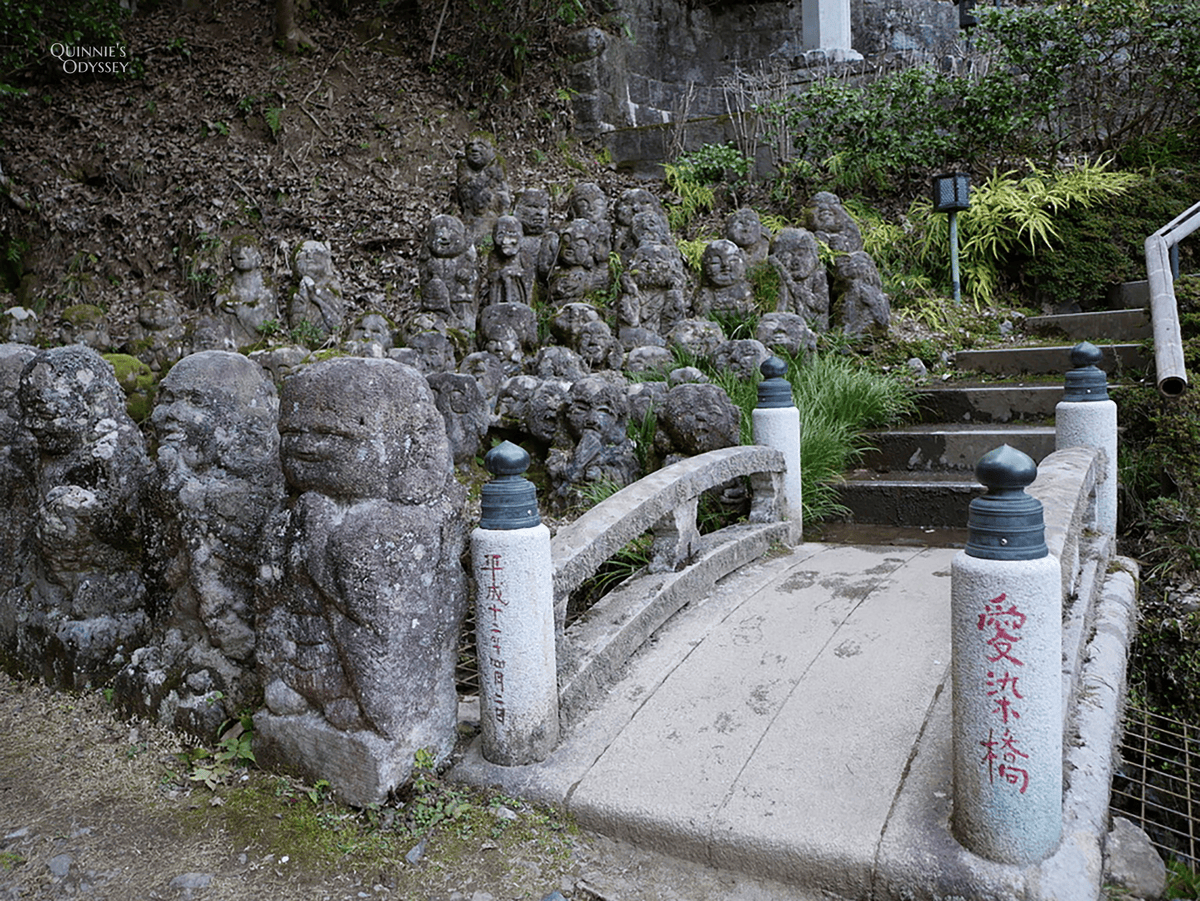
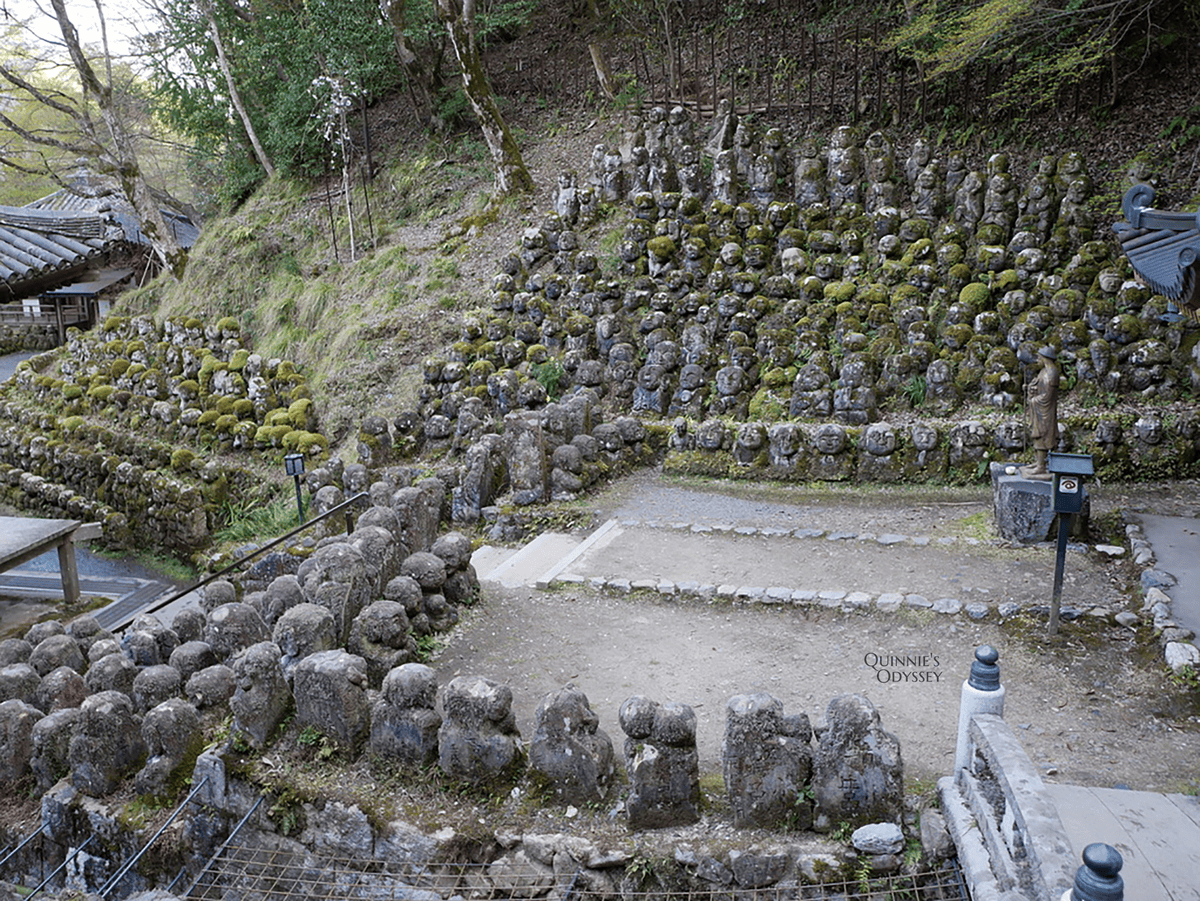
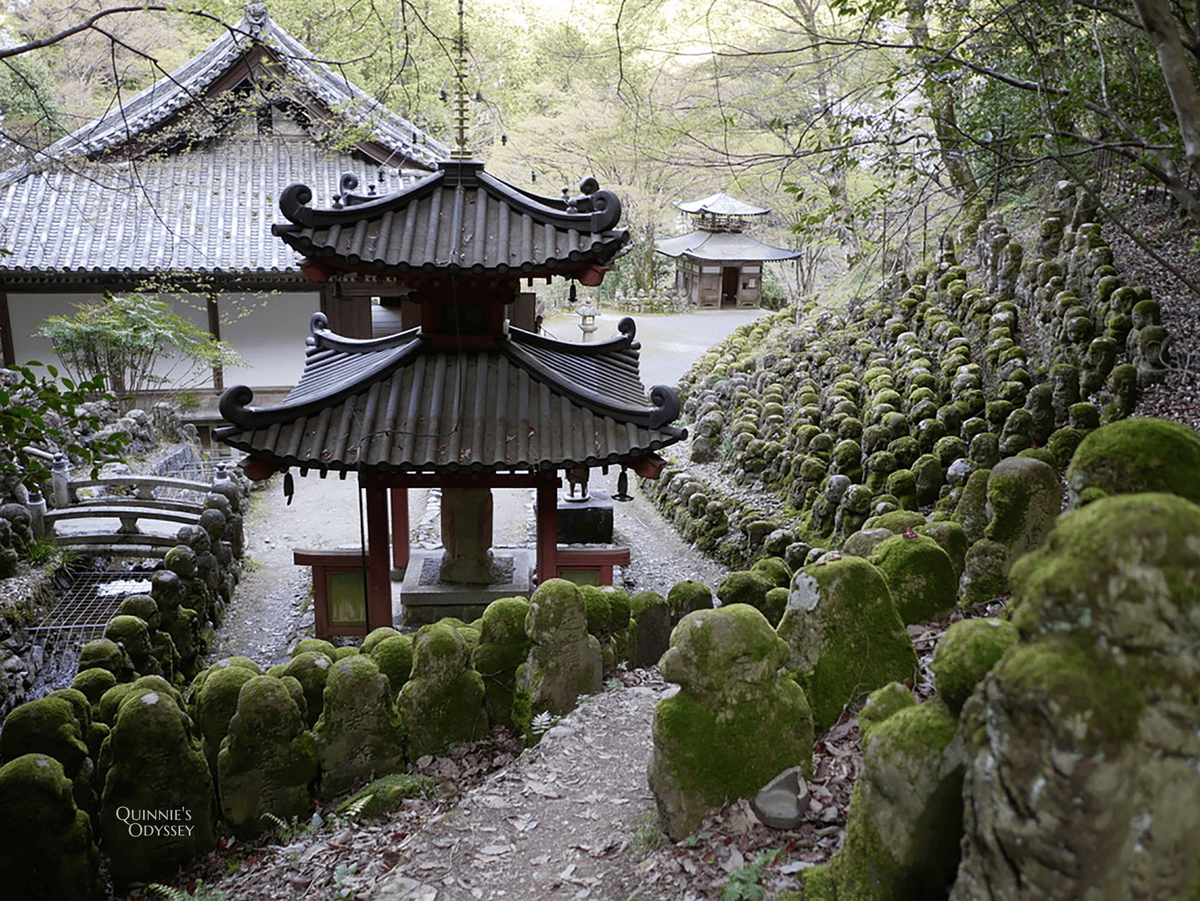
In one corner, we even found a small round statue that looked incredibly cute… though it had a little bird gift on its head. 😅
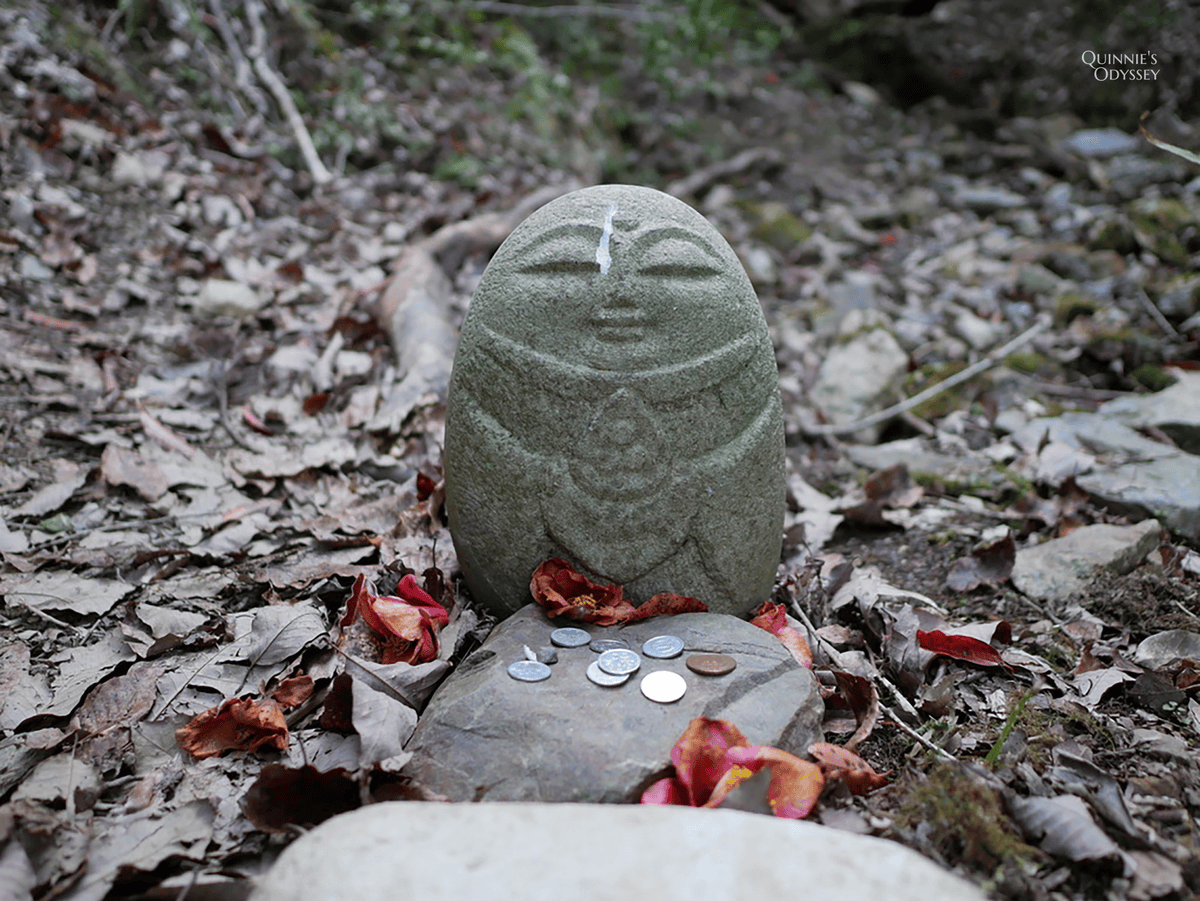
Inside the temple, you’ll find the Fire-Extinguishing Jizō Bodhisattva (Himetsu Jizō-son), believed to have the power to ward off both physical fires and the “fires” of anger, stress, and hardship in one’s life.
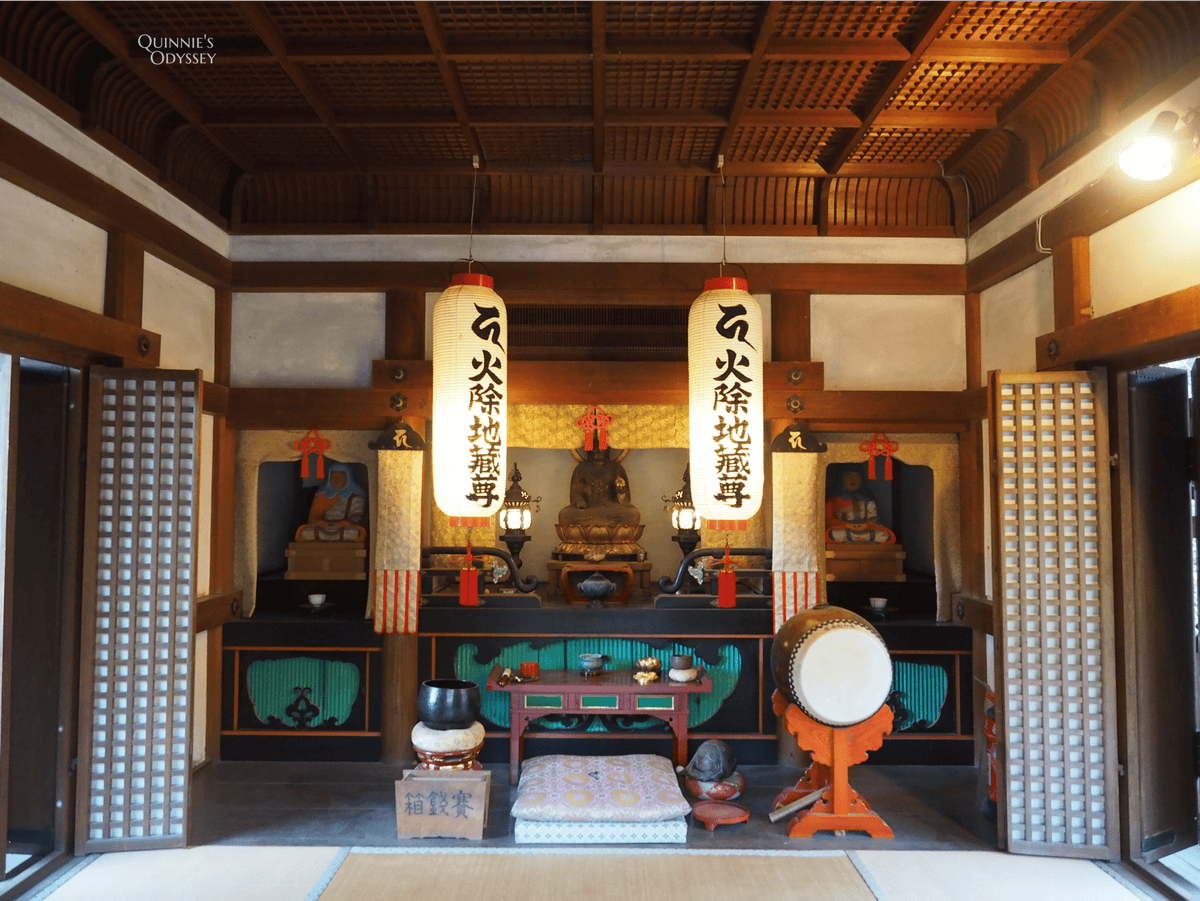
The main hall also enshrines the Thousand-Armed Kannon Bodhisattva, symbolizing compassion that reaches all beings in need.
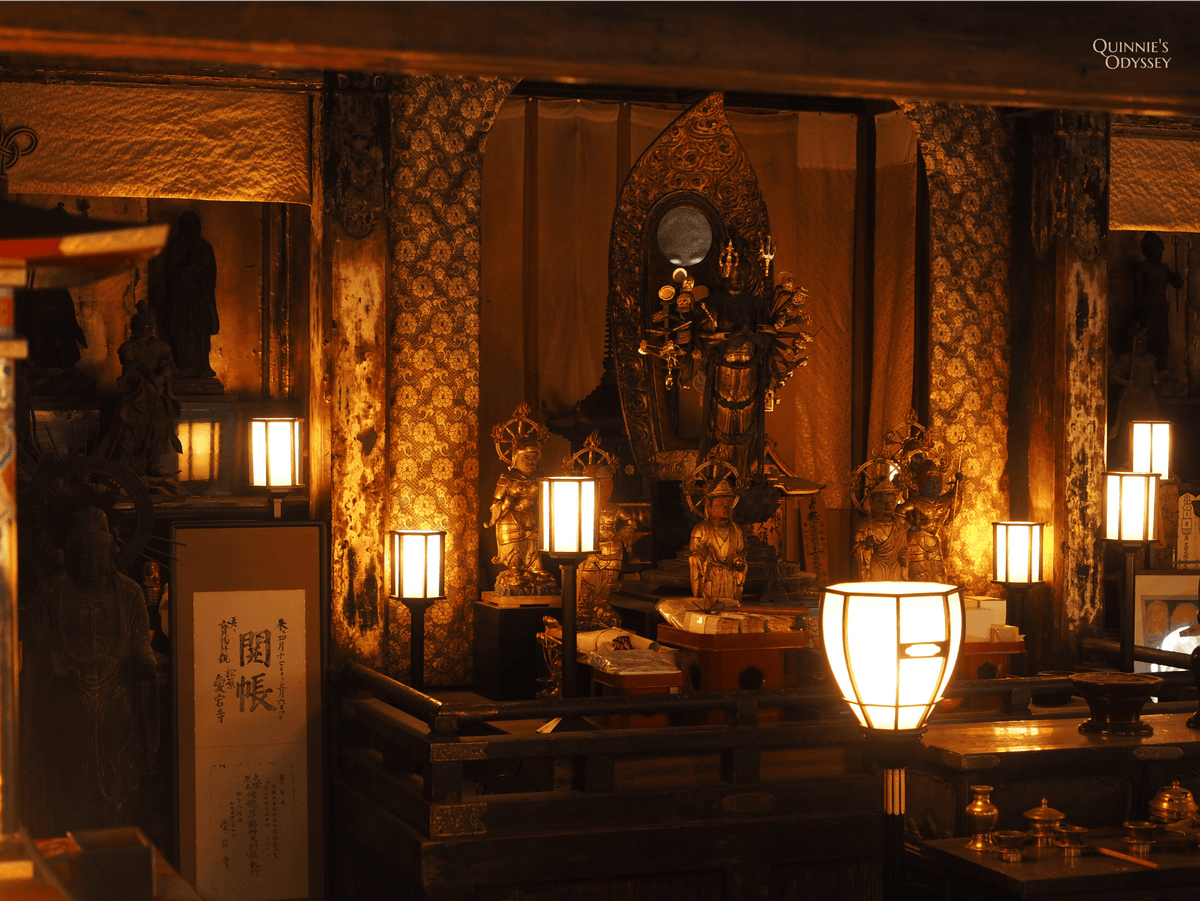
We managed to leave just before the temple closed at 4:30 p.m.
There’s a bus stop conveniently located right across the street, taking you back to central Arashiyama.
Buses are infrequent, so it’s best to check the timetable in advance!
▼ Kyoto Travel Essentials ▼

Thanks for reading!
If you’re interested in my stories, feel free to follow me on Instagram.
👉👉 IG: @sika_artist 👈👈